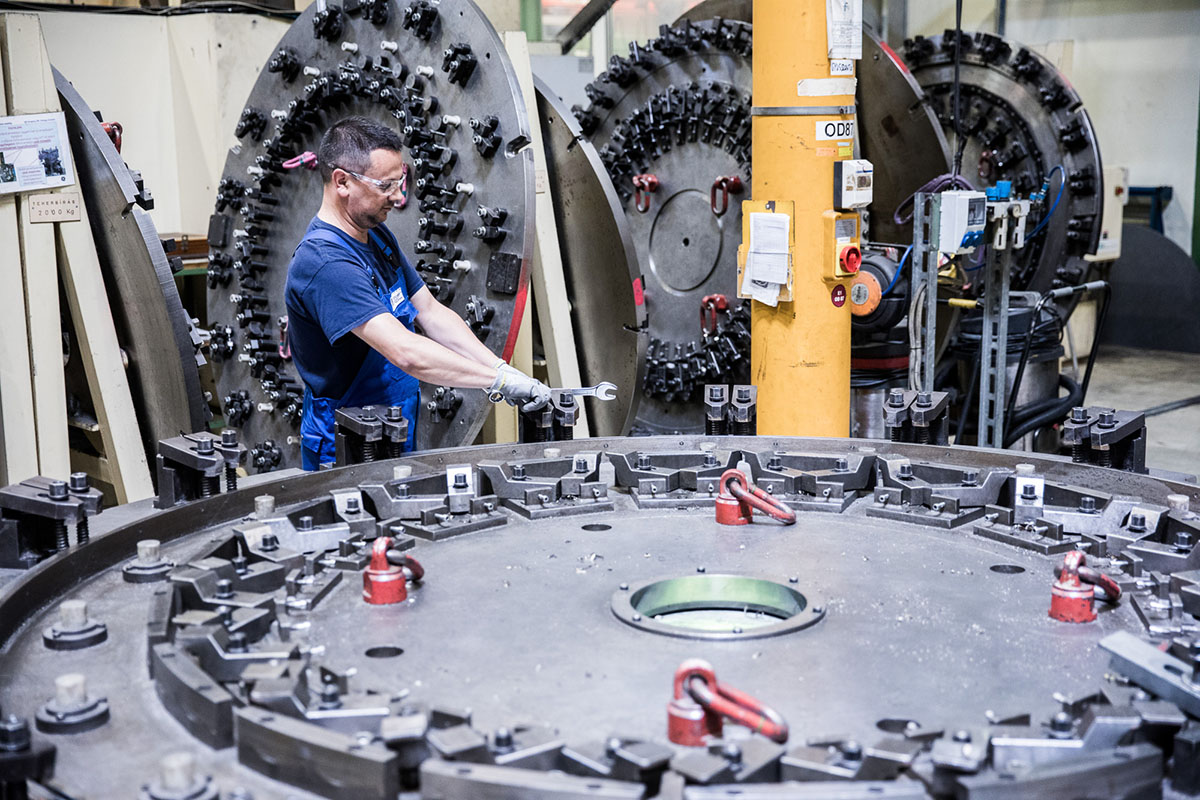After spending years building up its gas-power business, General Electric Co. is trying to figure out how to keep pace in a world that’s no longer all that interested in fossil fuels.
The plan to cut 12,000 jobs, or almost one-fifth of the power division’s global workforce, underscores GE’s bad bet on an old-school industry as natural gas loses favor and renewable energy gains. The company’s $10 billion deal to buy Alstom SA’s assets two years ago has compounded the pain.
“They clearly misjudged the shift that’s going on in the market,” said Jeff Sprague, an analyst with Vertical Research Partners. “It’s possible that there’s some semblance of stabilization, but there’s not really a good case for the business to go back to its former strength.”
The world’s largest maker of gas turbines says it needs to become leaner as its biggest business grapples with slowing demand. John Flannery, GE’s new chief executive officer, aims to cut $1 billion of costs from the power division next year as part of a sweeping plan to reshape the manufacturing icon and reverse a stock slump that’s the worst in the Dow Jones Industrial Average this year.
GE on Thursday pointed to the growth of renewables as a factor in its decision to cut jobs. GE Power CEO Russell Stokes called the move “ painful but necessary” to adapt to the market. The company isn’t alone: Siemens AG announced a plan last month to eliminate 6,900 positions and close factories amid a sharp drop in orders for power-plant equipment.
Growing Share
Renewable forms of energy such as wind and solar are likely to grab a bigger share of the market in the coming decades, generating more electricity than coal worldwide by 2040, the International Energy Agency said last month. Renewables will reap about two-thirds of $11.3 trillion in investment expected to flow to power plants over the period, the IEA said.
While GE has a sizable wind-power business, there is fiercer competition than in the gas-power market it currently dominates alongside Siemens. Last year, GE slipped to No. 2 in the U.S. as Vestas Wind Systems was the largest turbine supplier to domestic wind projects.
Meanwhile, wind turbines don’t have the same kinds of maintenance needs as the mammoth gas-powered machines, which require regular -- and lucrative -- aftermarket servicing from companies such as GE, Sprague said. As a result, a shift toward renewables may be a “net negative” for GE even if it wins contracts, he said.
“It’s not as economically attractive,” he said.
Biggest Business
Power was the company’s top revenue generator last year, with sales of $26.8 billion. The total would have been $36.8 billion based on a reorganization this year in which GE added some energy businesses to the unit.
The power unit had expanded considerably with the 2015 purchase of Alstom’s energy business, which bolstered GE’s gas- and steam-turbine business and added to its renewable-energy operations. But the purchase turned into a drag, pushing GE Power’s workforce to 65,000 at a time when the market was slowing.
At an investor meeting last month, Flannery acknowledged that the Alstom assets have “clearly performed below our expectations.”
Reducing headcount will help GE reset its power business as it tries to navigate a path forward, said Nicholas Heymann, an analyst with William Blair & Co.
“It’s clear we’re reducing the amount of fossil generation in developed economies,” he said. “It’s not like the world’s ending for gas, but I think you’re going to change the customer base.” – Bloomberg
Recommended stories:
